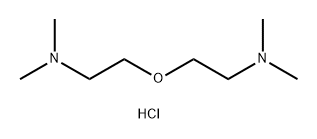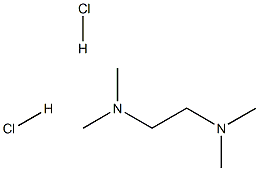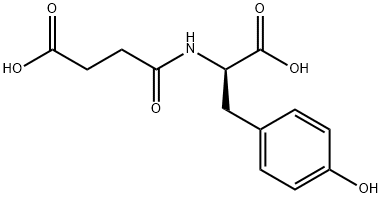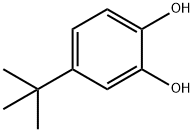tert-Butylamine
Synonym(s):2-Amino-2-methylpropane;TBA;tert-Butylamine
- CAS NO.:75-64-9
- Empirical Formula: C4H11N
- Molecular Weight: 73.14
- MDL number: MFCD00008050
- EINECS: 200-888-1
- SAFETY DATA SHEET (SDS)
- Update Date: 2024-12-18 14:15:32

What is tert-Butylamine?
Chemical properties
tert-Butylamine is a colorless liquid with a typical amine-like odor. It is one of the four isomeric amines of butane, the others being n-butylamine, sec-butylamine and isobutylamine. Butylamines are highly flammable, colorless liquids (n-turns yellow on standing) with ammoniacal or fishlike odors. tert-Butylamine is used in the preparation of insecticides, pharmaceuticals, oil additives, and rubber accelerators.
The Uses of tert-Butylamine
tert-butylamine is used as a precursor for the preparation of rubber accelerators, pharmaceuticals and dyes. It is employed in synthesis of N-tert-butyl-acetamide, isoquinolines, pyridines, decumbenine, sulfontes, sulfonamides and methyl beta-ketophosphonate. It is also used in the study the effect of amines in influencing atmospheric sulfuric acid - water nucleation, hydroamination of terminal alkynes and measuring the surface acidity of solid catalyst. It acts as an indicator molecule in the study of NMR -based pH determination method.
Definition
ChEBI: Tert-butylamine is a primary aliphatic amine that is ethylamine substituted by two methyl groups at position 1. It is a conjugate base of a tert-butylammonium.
Production Methods
tert-Butylamine is manufactured by reacting isobutylamine with sulfuric acid followed by cyanide to tert-butylformamide. Hydrolysis yields t-butylamine. It is used as a solvent and in organic syntheses.
Preparation
tert-Butylamine is produced commercially by direct amination of isobutylene using zeolite catalysts:
NH3 + CH2=C(CH3)2 → H2NC(CH3)3
The Ritter reaction of isobutene with hydrogen cyanide is not useful because it produces too much waste.
(CH3)2C=CH2 + HCN + H2O → (CH3)3CNHCHO
(CH3)3CNHCHO + H2O → (CH3)3CNH2 + HCO2H
In the laboratory, it can be prepared by the hydrogenolysis of 2,2-dimethylethylenimine, or via tert-butylphthalimide.
What are the applications of Application
Tert-Butylamine is also used for the production of herbicides, i.e., terbacil and the triazines terbutylazine, terbumeton, and terbutryn and insecticides (e.g., diafenthiuron). A derivative has also been proposed as stabilizer for cosmetics.
General Description
Tert-butylamine appears as a clear colorless liquid with an ammonia-like odor. Flash point 70°F. Less dense (at 6.2 lb / gal) than water. Vapors heavier than air. Toxic oxides of nitrogen produced during combustion.
Air & Water Reactions
Highly flammable. May be sensitive to air . Soluble in water.
Reactivity Profile
tert-Butylamine neutralizes acids in exothermic reactions to form salts plus water. May be incompatible with isocyanates, halogenated organics, peroxides, phenols (acidic), epoxides, anhydrides, and acid halides. Flammable gaseous hydrogen is generated in combination with strong reducing agents, such as hydrides. Undergoes highly exothermic reaction with 2,2-dibromo-1,3-dimethylcyclopropanoic acid [J. Chem. Soc., 1, 1979, 2324].
Hazard
Skin irritant. Flammable, dangerous fire risk.
Health Hazard
Inhalation causes irritation of nose, mouth, and lungs. Ingestion causes irritation of mouth and stomach. Contact with liquid causes severe irritation of eyes and moderate irritation of skin.
Fire Hazard
Special Hazards of Combustion Products: Toxic oxides of nitrogen may form in fire.
Safety Profile
Poison by ingestion. Moderately toxic to humans by inhalation. A corrosive liquid. See also n-BUTYLAMINE and AMINES. Very dangerous fire hazard when exposed to heat or flame. Very exothermic reaction with 2,2-dibromo-l,3 dimethylcyclopropanoic acid. To fight fire, use alcohol foam. When heated to decomposition it emits toxic fumes of NOx.
Potential Exposure
Alert: (n-isomer): Possible risk of forming tumors, suspected of causing genetic defects, suspected reprotoxic hazard, Primary irritant (w/o allergic reaction), (sec-isomer): Drug. n-Butylamine is used in pharmaceuticals; dyestuffs, rubber, chemicals, emulsifying agents; photography, desizing agents for textiles; pesticides, and synthetic agents. sec-Butylamine is used as a fungistate. tert-Butylamine is used as a chemical intermediate in the production of tert-Butylaminoethyl methacrylate (a lube oil additive); as an intermediate in the production of rubber and in rust preventatives and emulsion deterrents in petroleum products. It is used in the manufacture of several drugs
Shipping
UN1125 n-Butylamine, Hazard Class: 3; Labels: 3—Flammable liquid, 8—Corrosive material. UN2014 Isobutylamine, Hazard Class: 3; Labels: 3—Flammable liquid, 8—Corrosive material
Purification Methods
Dry it with KOH or LiAlH4, and/or distil it from CaH2 or BaO. [Beilstein 4 IV 657.]
Incompatibilities
May form explosive mixture with air. May accumulate static electrical charges, and may causeignition of its vapors. n-Butylamine is a weak base; reacts with strong oxidizers and acids, causing fire and explosion hazard. Incompatible with organic anhydrides; isocyanates, vinyl acetate; acrylates, substituted allyls; alkylene oxides; epichlorohydrin, ketones, aldehydes, alcohols, glycols, phenols, cresols, caprolactum solution. Attacks some metals in presence of moisture. The tert-isomer will attack some forms of plastics
Waste Disposal
Use a licensed professional waste disposal service to dispose of this material. Dissolve or mix the material with a combustible solvent and burn in a chemical incinerator equipped with an afterburner andscrubber. All federal, state, and local environmental regulations must be observed.
Properties of tert-Butylamine
| Melting point: | -67 °C (lit.) |
| Boiling point: | 46 °C (lit.) |
| Density | 0.696 g/mL at 25 °C (lit.) |
| vapor density | 2.5 (vs air) |
| vapor pressure | 5.7 psi ( 20 °C) |
| refractive index | n |
| Flash point: | −36.4 °F |
| storage temp. | Store below +30°C. |
| solubility | water: miscible1000g/L at 25°C |
| form | Liquid |
| pka | 10.68(at 25℃) |
| color | Clear |
| Odor | Like ammonia. |
| PH | 12 (100g/l, H2O, 20℃) |
| explosive limit | 1.5-9.2%(V) |
| Odor Threshold | 0.17ppm |
| Water Solubility | MISCIBLE |
| Sensitive | Air Sensitive |
| Merck | 14,1545 |
| BRN | 605267 |
| Dielectric constant | 4.3099999999999996 |
| Stability: | Stable. Incompatible with strong acids, strong oxidizing agents. Highly flammable. |
| CAS DataBase Reference | 75-64-9(CAS DataBase Reference) |
| NIST Chemistry Reference | 2-Propanamine, 2-methyl-(75-64-9) |
| EPA Substance Registry System | tert-Butylamine (75-64-9) |
Safety information for tert-Butylamine
| Signal word | Danger |
| Pictogram(s) |
 Flame Flammables GHS02  Corrosion Corrosives GHS05  Skull and Crossbones Acute Toxicity GHS06 |
| GHS Hazard Statements |
H225:Flammable liquids H302:Acute toxicity,oral H314:Skin corrosion/irritation H331:Acute toxicity,inhalation H412:Hazardous to the aquatic environment, long-term hazard |
| Precautionary Statement Codes |
P210:Keep away from heat/sparks/open flames/hot surfaces. — No smoking. P273:Avoid release to the environment. P280:Wear protective gloves/protective clothing/eye protection/face protection. P303+P361+P353:IF ON SKIN (or hair): Remove/Take off Immediately all contaminated clothing. Rinse SKIN with water/shower. P305+P351+P338:IF IN EYES: Rinse cautiously with water for several minutes. Remove contact lenses, if present and easy to do. Continuerinsing. |
Computed Descriptors for tert-Butylamine
tert-Butylamine manufacturer
Vinati Organics Limited
Krishna Solvechem Ltd.
S D Fine Chem Limited
AKASH PHARMA EXPORTS
SS Reagents and Chemicals
New Products
Tert-butyl bis(2-chloroethyl)carbamate 4-Methylphenylacetic acid N-Boc-D-alaninol N-BOC-D/L-ALANINOL N-octanoyl benzotriazole 3-Morpholino-1-(4-nitrophenyl)-5,6-dihydropyridin- 2(1H)-one Furan-2,5-Dicarboxylic Acid DIETHYL AMINOMALONATE HYDROCHLORIDE 1,1’-CARBONYLDIIMIDAZOLE R-2-BENZYLOXY PROPIONIC ACID 1,1’-CARBONYLDI (1,2-4 TRIAZOLE) N-METHYL INDAZOLE-3-CARBOXYLIC ACID (2-Hydroxyphenyl)acetonitrile 4-Bromopyrazole 5-BROMO-2CYANO PYRIDINE 5,6-Dimethoxyindanone 5-broMo-2-chloro-N-cyclopentylpyriMidin-4-aMine 2-(Cyanocyclohexyl)acetic acid 4-methoxy-3,5-dinitropyridine 1-(4-(aminomethyl)benzyl)urea hydrochloride 2-aminopropyl benzoate hydrochloride diethyl 2-(2-((tertbutoxycarbonyl)amino) ethyl)malonate tert-butyl 4- (ureidomethyl)benzylcarbamate Ethyl-2-chloro((4-methoxyphenyl)hydrazono)acetateRelated products of tetrahydrofuran








You may like
-
 TERTIARY BUTYLAMINE 99%View Details
TERTIARY BUTYLAMINE 99%View Details -
 tert -Butylamine 98%View Details
tert -Butylamine 98%View Details -
 tert-Butylamine extrapure AR CAS 75-64-9View Details
tert-Butylamine extrapure AR CAS 75-64-9View Details
75-64-9 -
 Tert Butyl Amine 99%View Details
Tert Butyl Amine 99%View Details -
 Tertiary Butyl Amine CASView Details
Tertiary Butyl Amine CASView Details -
 Tertiary Butyl Amine CASView Details
Tertiary Butyl Amine CASView Details -
 tert-Butylamine CAS 75-64-9View Details
tert-Butylamine CAS 75-64-9View Details
75-64-9 -
 tert-Butylamine CAS 75-64-9View Details
tert-Butylamine CAS 75-64-9View Details
75-64-9